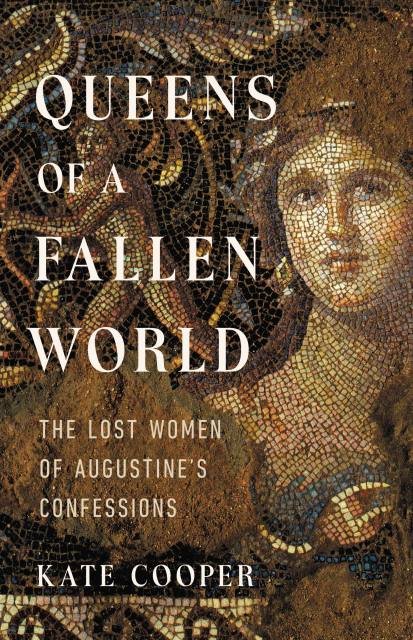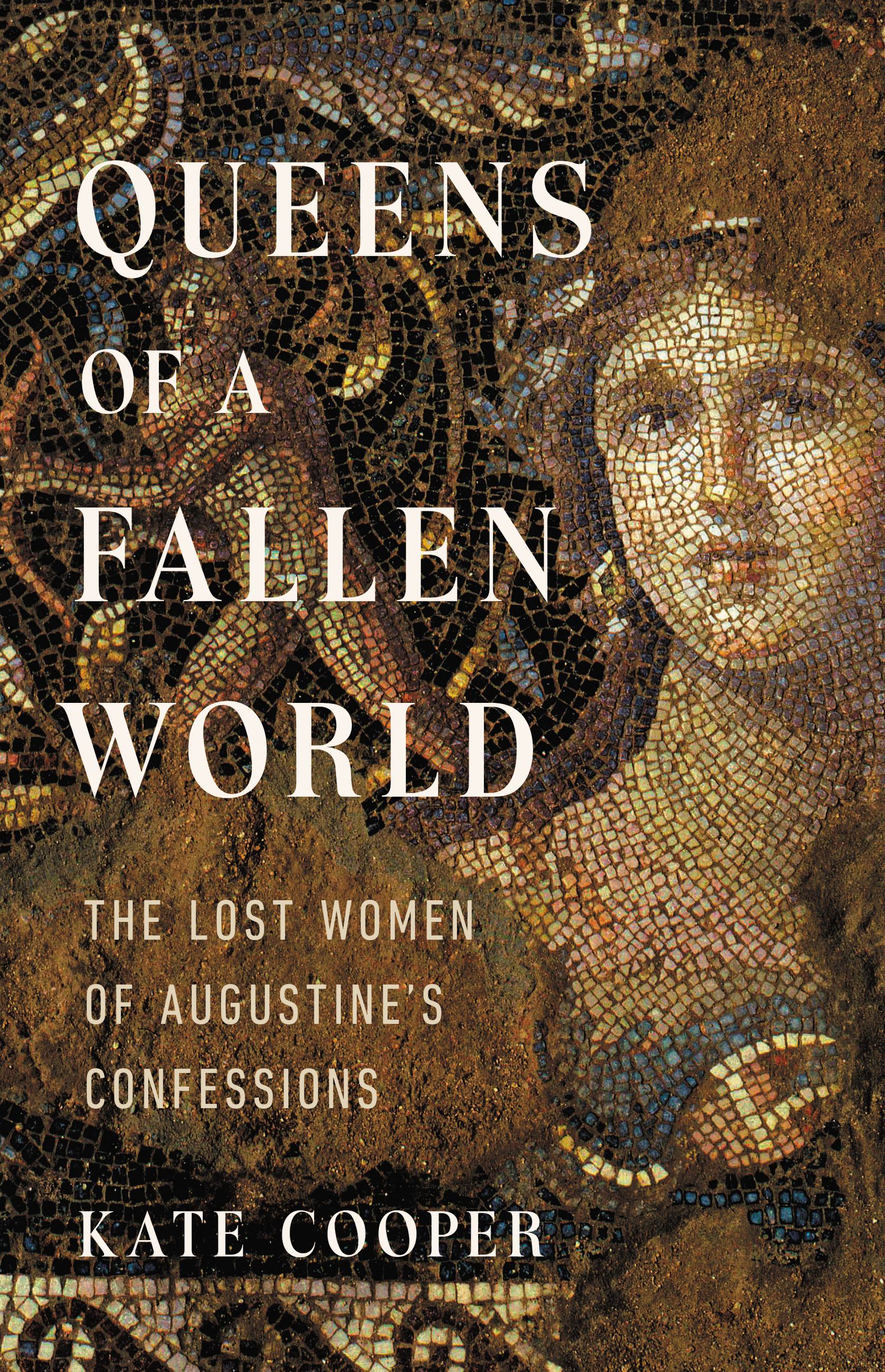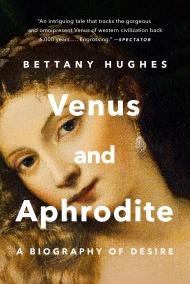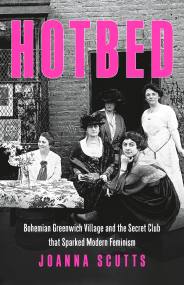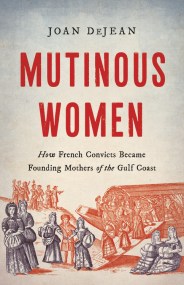Promotion
Use code BEST25 for 25% off storewide. Make sure to order by 11:59am, 12/12 for holiday delivery!
By clicking “Accept,” you agree to the use of cookies and similar technologies on your device as set forth in our Cookie Policy and our Privacy Policy. Please note that certain cookies are essential for this website to function properly and do not require user consent to be deployed.
Queens of a Fallen World
The Lost Women of Augustine's Confessions
Contributors
By Kate Cooper
Formats and Prices
- On Sale
- Apr 18, 2023
- Page Count
- 304 pages
- Publisher
- Basic Books
- ISBN-13
- 9781541646018
Price
$30.00Price
$38.00 CADFormat
Format:
- Hardcover $30.00 $38.00 CAD
- ebook $18.99 $24.99 CAD
- Audiobook Download (Unabridged) $24.99
This item is a preorder. Your payment method will be charged immediately, and the product is expected to ship on or around April 18, 2023. This date is subject to change due to shipping delays beyond our control.
Buy from Other Retailers:
FINALIST: THE CUNDILL HISTORY PRIZE 2023
The vibrant and surprising lives of the women in Augustine’s ConfessionsWhile many know of Saint Augustine and his Confessions, few are aware of how his life and thought were influenced by women.
Queens of a Fallen World tells a story of betrayal, love, and ambition in the ancient world as seen through a woman’s eyes. Historian Kate Cooper introduces us to four women whose hopes and plans collided in Augustine’s early adulthood: his mother, Monnica of Thagaste; his lover; his fiancée; and Justina, the troubled empress of ancient Rome. Drawing upon their depictions in the Confessions, Cooper skilfully reconstructs their lives against the backdrop of their fourth-century society. Though they came from different walks of life, each found her own way of prevailing in a world ruled by men.
A refreshingly complex and compelling portrait of Augustine, Queens of a Fallen World is the riveting story of four remarkable women who set him on course to change history.
-
FINALIST: THE CUNDILL HISTORY PRIZE 2023
-
“Highly readable, well-researched and imaginative… To those of us who thought we knew Augustine well, Queens of a Fallen World opens new vistas on his world and legacy.”Wall Street Journal
-
“Cooper should be praised for focusing on women who, by virtue of being in the Confessions, have long been known but, due to their gender, too often ignored . . . A thought-provoking exploration of gender in early Christian history.”Kirkus
-
"Intriguing study...It's an eye-opener."Publishers Weekly
-
"A masterpiece of the historian’s art. With a rare balance of state-of-the-art erudition and felicitous hypotheses, Kate Cooper has brought the hidden women in Augustine’s early life into the light. Governed throughout by a humane sense of the texture of a distant late Roman society, she captures women’s voices which we would not otherwise have heard."Peter Brown, author of Augustine of Hippo: A Biography
-
“An enchanting tour de force of sensitive and probing historical writing. Queens of a Fallen World reveals the traces of forgotten female voices in Augustine’s loves, losses, regrets, and consolations. Cooper’s enquiry into the influence of women on Augustine—whether empress, mother, lover, saint, or slave—enriches his legacy.”Adrienne Mayor, author of The Amazons: Lives and Legends of Warrior Women across the Ancient World
-
“An evocative reconstruction of the bright lives of four women who each made an indelible impact on a towering figure of the early church. St. Augustine may have helped to shape the Christian world—but he, in turn, was shaped by them. Kate Cooper’s wonderful book resuscitates and restores them to their rightful place in Augustine’s legacy.”Kara Cooney, author of When Women Ruled the World: Six Queens of Egypt
-
"What an invigorating book! Cooper asks a haunting question: how different would our world be had this man married either his concubine—who was the loyal mother of his child—or the young heiress he was betrothed to, instead of withdrawing from sexual relationships altogether?"Sarah Ruden, translator of Augustine’s Confessions
-
“A bold and imaginative venture into challenging territory. Cooper casts new light onto the women of the ancient world—and one of the founders of Western thought.”Sarah Gristwood, author of The Tudors in Love and Game of Queens
-
“A marvelous achievement. Kate Cooper shines her historian's spotlight on an Augustine so vivid in his Confessions, but so often overlooked: a man who loved and appreciated women...Cooper sketches an evocative landscape of the late Roman world in Milan and North Africa—from its courts to its churches, from military encampments to rural villas, from empresses to the enslaved. Above all, her’s is a world of human beings suffering heartache and loneliness while trying to reconcile the pull of the heart with the lure of ambition.”Susanna Elm, Sidney H. Ehrman Professor of European History, University of California, Berkeley
-
"Fascinating and well-written, Queens of a Fallen World raises vital questions about the role of women in the founding centuries of Christianity, piecing together a rich backdrop to Augustine’s life that has rarely emerged before. Cooper convinces us that these women can be recovered, and that through his words and thoughts, their lives shaped the future of a fledgling religion. A brilliant new take.”Janina Ramirez, author of Femina: A History of the Middle Ages, Through the Women Written Out of It
Praise
-
FINALIST: THE CUNDILL HISTORY PRIZE 2023
-
“Highly readable, well-researched and imaginative… To those of us who thought we knew Augustine well, Queens of a Fallen World opens new vistas on his world and legacy.”Wall Street Journal
-
“Cooper should be praised for focusing on women who, by virtue of being in the Confessions, have long been known but, due to their gender, too often ignored . . . A thought-provoking exploration of gender in early Christian history.”Kirkus
-
“Intriguing study…It’s an eye-opener.”Publishers Weekly
-
“A masterpiece of the historian’s art. With a rare balance of state-of-the-art erudition and felicitous hypotheses, Kate Cooper has brought the hidden women in Augustine’s early life into the light. Governed throughout by a humane sense of the texture of a distant late Roman society, she captures women’s voices which we would not otherwise have heard.”Peter Brown, author of Augustine of Hippo: A Biography
-
“An enchanting tour de force of sensitive and probing historical writing. Queens of a Fallen World reveals the traces of forgotten female voices in Augustine’s loves, losses, regrets, and consolations. Cooper’s enquiry into the influence of women on Augustine—whether empress, mother, lover, saint, or slave—enriches his legacy.”Adrienne Mayor, author of The Amazons: Lives and Legends of Warrior Women across the Ancient World
-
“An evocative reconstruction of the bright lives of four women who each made an indelible impact on a towering figure of the early church. St. Augustine may have helped to shape the Christian world—but he, in turn, was shaped by them. Kate Cooper’s wonderful book resuscitates and restores them to their rightful place in Augustine’s legacy.”Kara Cooney, author of When Women Ruled the World: Six Queens of Egypt
-
“What an invigorating book! Cooper asks a haunting question: how different would our world be had this man married either his concubine—who was the loyal mother of his child—or the young heiress he was betrothed to, instead of withdrawing from sexual relationships altogether?”Sarah Ruden, translator of Augustine’s Confessions
-
“A bold and imaginative venture into challenging territory. Cooper casts new light onto the women of the ancient world—and one of the founders of Western thought.”Sarah Gristwood, author of The Tudors in Love and Game of Queens
-
“A marvelous achievement. Kate Cooper shines her historian’s spotlight on an Augustine so vivid in his Confessions, but so often overlooked: a man who loved and appreciated women…Cooper sketches an evocative landscape of the late Roman world in Milan and North Africa—from its courts to its churches, from military encampments to rural villas, from empresses to the enslaved. Above all, her’s is a world of human beings suffering heartache and loneliness while trying to reconcile the pull of the heart with the lure of ambition.”Susanna Elm, Sidney H. Ehrman Professor of European History, University of California, Berkeley
-
“Fascinating and well-written, Queens of a Fallen World raises vital questions about the role of women in the founding centuries of Christianity, piecing together a rich backdrop to Augustine’s life that has rarely emerged before. Cooper convinces us that these women can be recovered, and that through his words and thoughts, their lives shaped the future of a fledgling religion. A brilliant new take.”Janina Ramirez, author of Femina: A History of the Middle Ages, Through the Women Written Out of It
